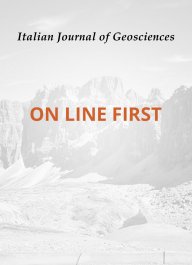

A Syracusan hypothesis on the origin of the Riace Bronzes: new investigations and a historical-scientific revision of literature data through an interdisciplinary geological-archaeological approach
Rosolino Cirrincione1, Carmelo Cantaro2, Stefano Columbu3, Salvatore Critelli4, Valeria Indelicato1,5, Emilia Le Pera6, Carmelo Monaco1,7, Rosalba Panvini8, Fabio Portella9, Rosalda Punturo1,10, Rossana Sanfilippo1, Saverio Scerra11, Giovanni Scicchitano12, Carmela Vaccaro13 & Anselmo Madeddu14
1Dipartimento di Scienze Biologiche, Geologiche e Ambientali, Università di Catania. 2ARPA - Agenzia Regionale per la Protezione dell’Ambiente (ARPA) della Sicilia, Catania. 3Dipartimento di Scienze Chimiche e Geologiche, Università di Cagliari. 4Dipartimento di Ingegneria per l’Ambiente, Università della Calabria. 5Department of Science, Technology and Society, University School for Advanced Studies IUSS, Pavia. 6Dipartimento di Ingegneria Civile, Università della Calabria. 7INGV-Istituto Nazionale di Geofisica e Vulcanologia, Osservatorio Etneo, Catania. 8Archeologa e docente – Università di Catania. 9Ispettore onorario della Soprintendenza del Mare, Sicilia. 10CNR-IGAG, Istituto di Geologia Ambientale e Geoingegneria, Roma. 11Archeologo – Soprintendenza ai Beni Culturali e Ambientali di Ragusa. 12Dipartimento di Scienze della Terra e Geoambientali, Università di Bari – Aldo Moro. 13Dipartimento di Scienze dell’Ambiente e della Prevenzione, Università di Ferrara. 14Scrittore, storico e autore del libro “Il Mistero dei Guerrieri di Riace: l’ipotesi siciliana”.
Corresponding author e-mail: cmonaco@unict.it
Abstract
Keywords
Get Full Text